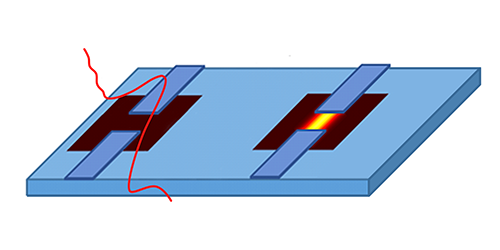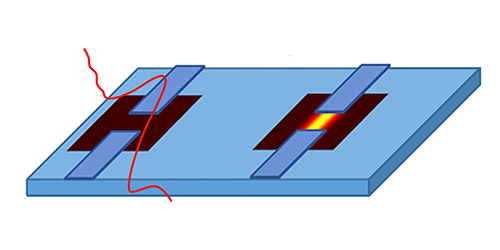Ultrafast Switching in a Phase-Change Material
Chalcogenide compounds are phase-change materials used in some types of rewriteable DVDs. The materials’ phase change—between an amorphous glass and an ordered crystal—relies on a separate electrical change: a field-induced drop in resistance, called “threshold switching.” To explore how fast this switching occurs, researchers exposed a chalcogenide compound to electrical pulses that were shorter than those previously tested. They found that threshold switching occurs on subpicosecond scales, suggesting chalcogenides have a future in ultrafast memory devices and switches.
In memory applications, chalcogenide compounds are transformed between their glass and crystalline phases using electric fields. The fields induce currents that heat the material to certain transition temperatures. Threshold switching plays a role in reducing the resistance (by as much as a factor of a thousand) in the chalcogenide glass phase so that sufficient current can flow through the material.
Some recent data have suggested that threshold switching occurs at nanosecond scales, which is not fast enough for certain proposed memory applications. To test the switching speed, Peter Zalden and Michael Shu, from the SLAC National Accelerator Laboratory in California, and colleagues fired a train of picosecond light pulses in the terahertz frequency range at a common chalcogenide. The team deposited the chalcogenide between gold electrodes to boost the electric field amplitude. Following the pulse exposure, crystalline filaments appeared in the sample, as confirmed with x-ray diffraction. The presence of crystallization implies that threshold switching takes less than a picosecond to occur. This could prove important for the development of phase-change memory, which would use chalcogenides for random access memory (like in a flash drive).
This research is published in Physical Review Letters.
–Michael Schirber
Michael Schirber is a Corresponding Editor for Physics based in Lyon, France.





